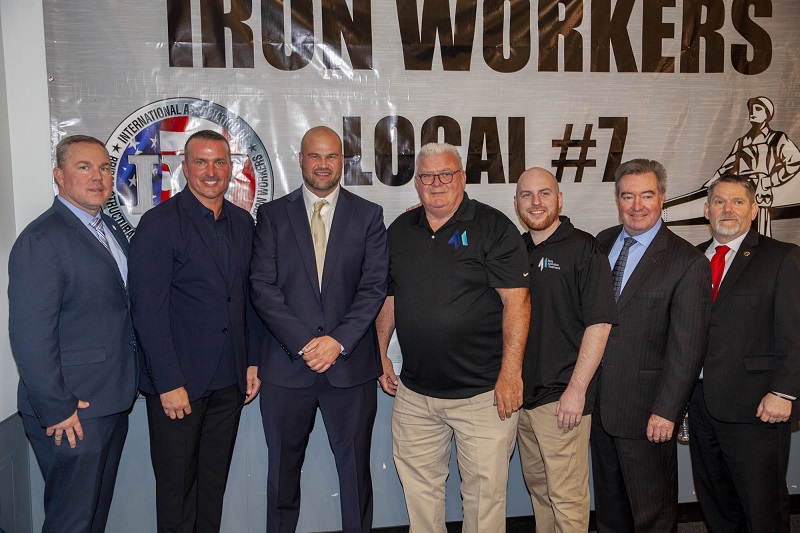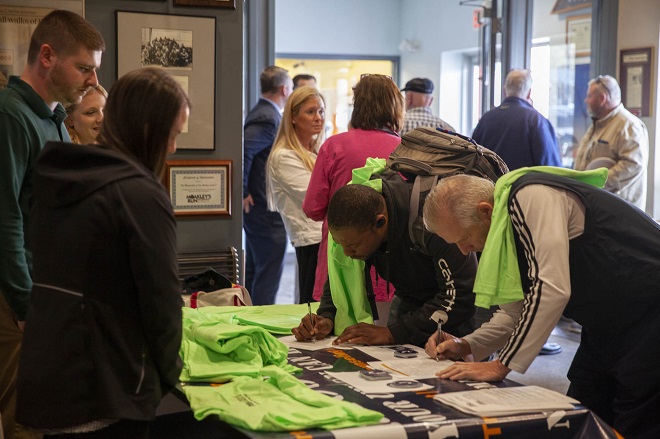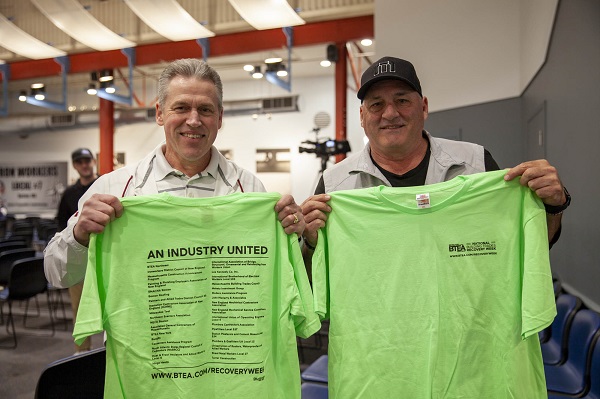Iron Workers Local 7 Union Hosts Building Trades Recovery Week Kickoff Event
15.1 percent of U.S. adults reported new or increased substance use due to pandemic-related stress.
 [left to right] Mike Hess, Business Manager of Iron Workers Local 7; Chris Herren, former NBA basketball player and founder of the Herren Project; Thomas Gunning Jr., Executive Director of BTEA Northeast; Jimmy Kane, Director of Business Development Manager at Meta Addiction Treatment; Matt Simpson, Program Director at Meta Addiction Treatment; Frank Callahan, President of the Massachusetts Building Trades Council; and Shawn Nehiley, President of the Iron Workers District Council of New England.
[left to right] Mike Hess, Business Manager of Iron Workers Local 7; Chris Herren, former NBA basketball player and founder of the Herren Project; Thomas Gunning Jr., Executive Director of BTEA Northeast; Jimmy Kane, Director of Business Development Manager at Meta Addiction Treatment; Matt Simpson, Program Director at Meta Addiction Treatment; Frank Callahan, President of the Massachusetts Building Trades Council; and Shawn Nehiley, President of the Iron Workers District Council of New England.
BOSTON, MA – Iron Workers Local 7 kicked off the second annual Building Trades for Recovery Week conference at its union hall. The conference, organized by the Building Trades Employers Association (BTEA) Northeast, aims to raise awareness of Substance Use Disorder (SUD) across the hard-hit construction industry while breaking the stigma surrounding abuse and addiction and providing resources and support for those in need.
“Local 7 is honored to kick off this year’s Recovery Week at our union hall,” said Mike Hess, Business Manager of Iron Workers Local 7. “Construction is dangerous work, and upholding safety on the job is a principal reason why unions are so important. Still, injuries do happen and even normal wear and tear out on the job can lead to addictive substance use, prescribed or otherwise. It is critical for people to understand that addiction is a chemical reaction, not a character flaw, so that people who need it will come forward and get help.”

The union is a vocal advocate for recovery, promoting the many resources available to members through its various channels. The union holds weekly AA meetings at its union hall where a community of peers support one another on the road to recovery. The union also offers Modern Assistance Program to members free of charge, which offers services such as counseling, alternative health care, and outpatient treatment programs.
“Whatever you’re going through, you don’t have to go through it alone,” said Mike Doucette, Financial Secretary/Treasurer and organizer of recovery resources at Iron Workers Local 7. “That’s really the message of this recovery week. People from all walks of life have gone through addiction and come out the other side. There is hope and there is support for everyone.”

Research shows that the construction industry is disproportionately affected by SUD. This year’s conference comes at a particularly critical time as communities continue to rebuild in the wake of the coronavirus pandemic, which created increased mental health hazards as people were forced into mass layoffs, lockdowns, and social isolation. In September 2020, 15.1% of U.S. adults reported new or increased substance use due to pandemic-related stress.
At the kickoff event, participants had the opportunity to hear from industry and recovery leaders including: Chris Herren, former NBA basketball player and founder of the Herren Project; Frank Callahan, President of the Massachusetts Building Trades Council; Thomas Gunning, Executive Director of BTEA Northeast; and Shawn Nehiley, President of the Iron Workers District Council of New England.
The speakers shared different perspectives on SUD and its effects on the construction industry, but all had one unifying message: No one needs to suffer alone. Any worker struggling with substance abuse and addiction should turn to the industry’s network of allies and resources for judgment-free, proven recovery support.
Recovery Week will continue with new events each day through Friday, April 29, when it will conclude with a national jobsite stand down in honor of those who have lost their lives to SUD.
About Iron Workers Local 7:
Iron Workers Local 7 represents over 3,600 members specializing in bridge, structural, ornamental, reinforcing, pre-engineered metal buildings, industrial maintenance, architectural, heavy rigging, and welding across New England. We’ve built our region for over 120 years, including top medical facilities, universities, sports stadiums, historic buildings, and much more.
